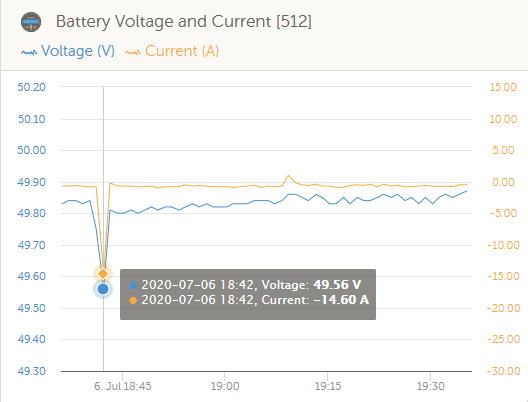System details :
- MultiPlus-II 48/3000
- Pylontech US2000B Plus 4.8kWh Li-Ion Battery
- Venus GX
- ESS
I'm running an ESS system and noticed that the startup of large AC loads are being powered from the battery / inverter when on scheduled charge. The scenario is as follows:
- Scheduled charge period
- Target charge has been reached
- Grid is available
- Zero PV
Under these conditions, my understanding is that the system should be relying on the grid to power the loads (with minor background losses). What I'm seeing is that the batteries are used to support the startup of large loads while the grid contribution is slowly ramped up over a few seconds. In the screenshot below, we were using a clothes iron that switched on and off frequently. This resulted in large loads being pulled from the battery each time the element switched on and corresponding charges pushed to the battery when the load switched off. Any way to change the behaviour and get the system to rely on the grid in this scenrio?



Here is less extreme example where a kettle is switched on and pulls 14A from the battery during a scheduled charge period:


